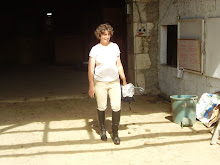When I present
TPRS I feel a little bit like the witch in Hansel and Gretel. She has this house made out of goodies, candy
and sweets and the children start nibbling and it’s really good stuff and
before they know it she has them.
Except I’m a
good witch, not a wicked witch. I don’t
eat the children that come nibbling at my shutters. I don’t make prisoners of them. But the funny thing is that once they’ve come
into the house and visited all the corners and met the great people who live
there, they fall victim to the spell of TPRS and never want to leave.
The candy and
goodies that the TPRS house is made of are techniques that any teacher, using
any method, can use. PQA is a fantastic
way to present new vocabulary by personalizing it so students retain it. Circling is a great way to get in the
repetitions that students need. Asking a story with your students gets them
engaged and interested and gives them a structure that is easy to remember. Embedded
Readings allow weak students to find their sea legs and progress. Pop-ups make
grammar relevant and digestible. Teaching to the eyes, barometer students,
pause and point, interactive communication rubrics, fluency writing, these are
all techniques used by TPRS teachers that other teachers can put in their tool
kits. These are the goodies.
Stephen
Krashen is the wizard that casts a spell on them and retains those innocent
seekers of innovation and effective new tools in the house of Comprehensible
Input. Because once you’ve tasted the
TPRS candies and seen how they work with your students, you start craving more
and wondering why they work so well. And
you start weeding out less effective techniques that use up the limited time you have with your students. And Krashen, gently, respectfully, suggests
why some strategies work and some don’t. And one day you realize that you are
judging every class activity by the standard of comprehensible input, that you
have tossed out of your toolkit everything that does not furnish your students
with comprehensible input. Gotcha!

No comments:
Post a Comment